7 Secrets of Steam-Bending
Bend furniture parts perfectly without fail.
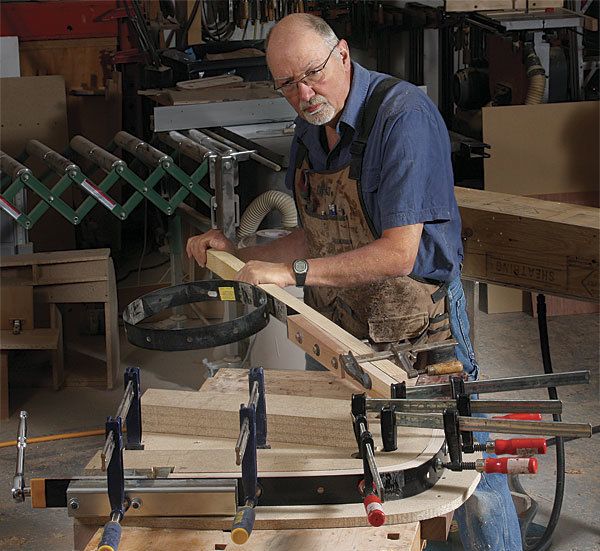
Synopsis: Learn to produce astonishing curves in your furniture using steam-bending. Michael Fortune demonstrates how to bend wood without breaking it, using a steambox and a bending form. Fortune explains why air-dried lumber is better, and why a compression strap is the go-to tool if you want serious curves in your furniture. He also gives pointers on proper temperatures and times in the steam box, in the compression strap, and while clamped and drying. Learn how to make a simple clamping form, and to build your own simple steambox. Spend some time exploring the world of steam-bending and you will soon take your projects to a new level.
There are three ways to make a curved part from solid wood. You can cut it out of a larger block, laminate thin plies over a form, or bend it over a form using the magic of deep heat. I prefer bending, using steam to make the wood pliable. Steam-bent parts are more attractive and stronger than those cut from a block of wood. And although bent laminations are stronger than steam-bent parts, they have gluelines, and non-continuous grain on the sides, which can detract from the part’s beauty.
More on FineWoodworking.com: |
You may have heard that steam-bending wood is a difficult technique that produces as many broken and misshapen parts as good ones. But it’s not hard, just misunderstood. I’ll show you how to bend without breaking, creating strong curved parts from solid wood. I’ll also give you some tips on making a steambox and bending forms, and drying the bent parts. My steam-bending techniques are wonderfully simple and yield perfect parts every time. I’ve used them for 35 years, creating curved parts without a problem. There are specific conditions you must control—such as temperature and how long the steam is applied—and if you do that, you are home free.
Bend only air-dried lumber, and use straps
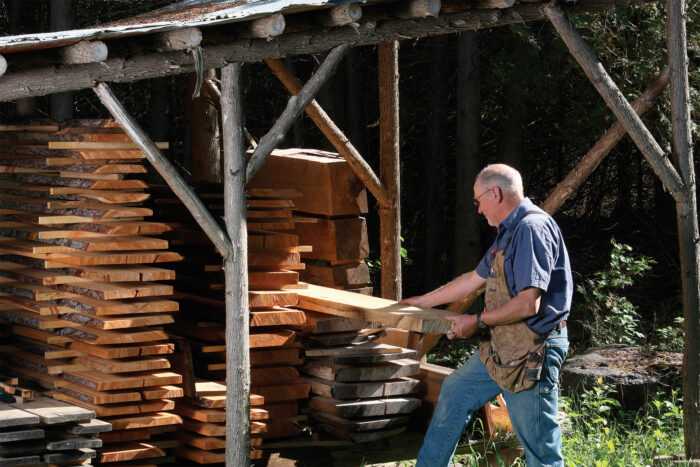
The first thing to know about steam-bending is that you should bend only air-dried wood. Drying wood in a kiln sets the wood’s lignin, which is a binding substance, and permanently adheres the fibers and cells to one another. Since they can’t move relative to one another, the fibers tear as you bend the wood. That’s not the case with air-dried lumber, where flexible lignin is softened by steam, allowing the fibers and cells to bend without tearing.
However, even with air-dried lumber, you need to make sure that the wood isn’t too dry for bending. The moisture content needs to be between 12% and 16%. Check it with a moisture meter.
The ideal woods for steam-bending are domestic hardwoods. Ash,
oak, hickory, elm, and walnut are best when you’re learning, but with
practice you’ll be able to bend difficult woods like figured cherry and
curly and bird’s-eye maple. Domestic softwoods and tropical hardwoods are not good choices. Softwood fibers are too short, while those in tropical woods are interlocking. Both are prone to tearing. However, even with air-dried domestic hardwoods, you cannot just steam the part, bend it around a form, and clamp it. That will stretch the wood fibers on the outside surface of the curve. The amazing thing about wood is that it won’t stretch much without breaking, but it will compress almost beyond belief.
The best way to create a stack of beautiful parts is to compress the fibers on the inside of the curve rather than stretching them on the outside. The secret is a metal strap with two end stops (Veritas Strap Clamp, No. 05F10.01; $80, leevalley.com). The strap goes on the outside of the part, which fits between the stops. When you bend the part, the strap prevents the outside fibers from stretching, forcing the fibers on the inside of the curve to compress. You’ll
be amazed at the bends you can make using a compression strap. Skip it, and many parts will end up broken, and those that don’t will have inconsistent shapes.
How to bend wood with steam
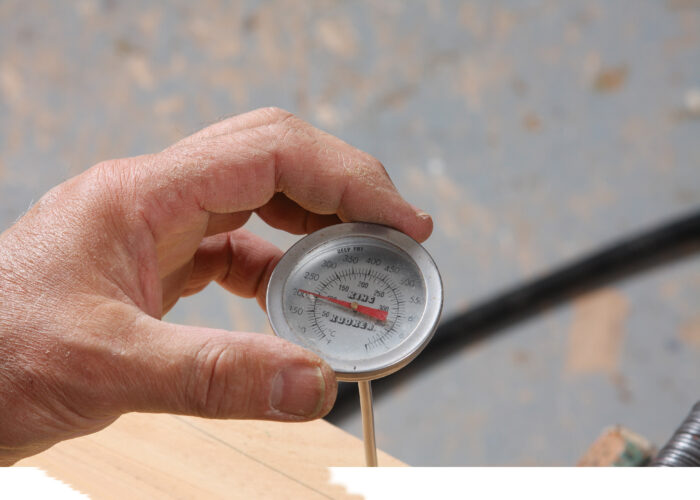
For steam-bending wood, you need a box to hold the steam and a way to make that steam. I’ve been using the same box since 1976. You can make a similar one from inexpensive plywood. As for the steam itself, buy a steamer designed for woodworkers.
The bending form must be durable. Make it by gluing together layers of particle-board and then cutting out the shape. The cut surface doesn’t need to be glass-smooth, so don’t worry about sanding it.
After the form is made, you’re ready to steam the parts. Heat the box to between 200°F and 210°F. Then load the parts, writing the time entered on the end grain of each piece. Steam them one hour for each inch of thickness.
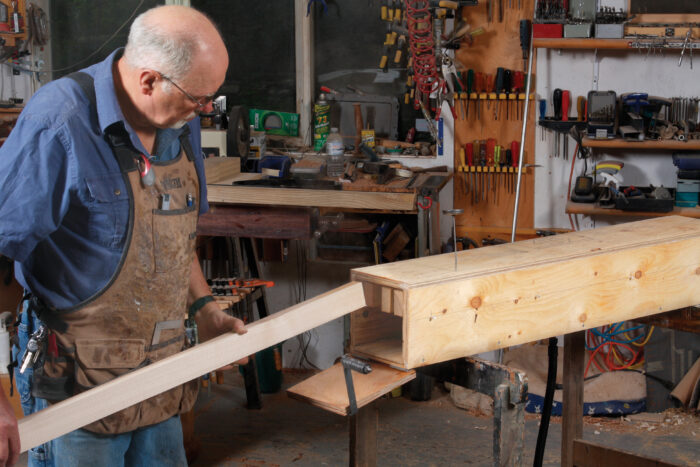
You must be careful not to steam a part for too long. A 1-in.-thick part can be steamed for one to two hours without trouble, but if you steam it for three hours the fibers become too flexible and will wrinkle rather than slip past one another when you compress them. These compression wrinkles show up on the inside face of the part. The threat of oversteaming also has a practical impact on how many parts you can steam at once. You don’t want to put so many parts in that you can’t get the last one onto the bending form before it’s been in for too long.
Wear gloves when you pull the part out of the steambox. It will be hot. To avoid scalds, keep your body away from the steam that rises when you open the door. After you’ve pulled the part out, don’t rush. A 1-in.-thick part retains enough heat to remain pliable for 10 minutes. Thicker parts stay pliable for longer—a 21⁄2-in.-thick part is good for about 20 minutes.

Place the steamed part between the end stops on the strap and snug up the adjustable stop just enough to create a slight arc in the strap and part. If the strap is any looser, the fibers on the outside surface can tear, but if it’s any tighter, compression wrinkles can form on the inside surface. Use a few clamps to keep the part aligned with the strap. This is especially important for parts less than 3⁄4 in. thick. Take them off one at a time as you bend the part.

Attach one end of the strap to the bending form. One person can bend parts up to 11⁄2 in. thick without help. To bend thicker parts by yourself, you can use a block and tackle. If a kink forms as you are bending, clamp the strap and part to the form right behind the area where the kink formed, using the clamp (and not the lever) to pull the part down to the form. After that you can continue bending the part with the lever.
If you have trouble bending the part or find that your clamps aren’t big enough, no worries. Just put the part back in the steambox to bring it back up to the correct temperature and try again.
Dry parts to lock in the new shape
A part that has been steamed and bent around a form will not hold its new shape until it has dried completely and the lignin has set, down to a moisture content around 7% or 8%. It takes about a week for that to happen, but checking with a moisture meter is the most accurate way to determine when the part is truly dry.

You can use a household fan to blow air over the drying part and speed up the process. For most woods, you can get the fan going as soon as you’re done clamping the part to the form. But don’t use the fan right away for ring-porous woods like oak, because they are prone to checking if they dry too quickly. I cover oak and similar woods with a blanket for the first day to slow down the drying. On the second day, I remove the blanket and turn on the fan.
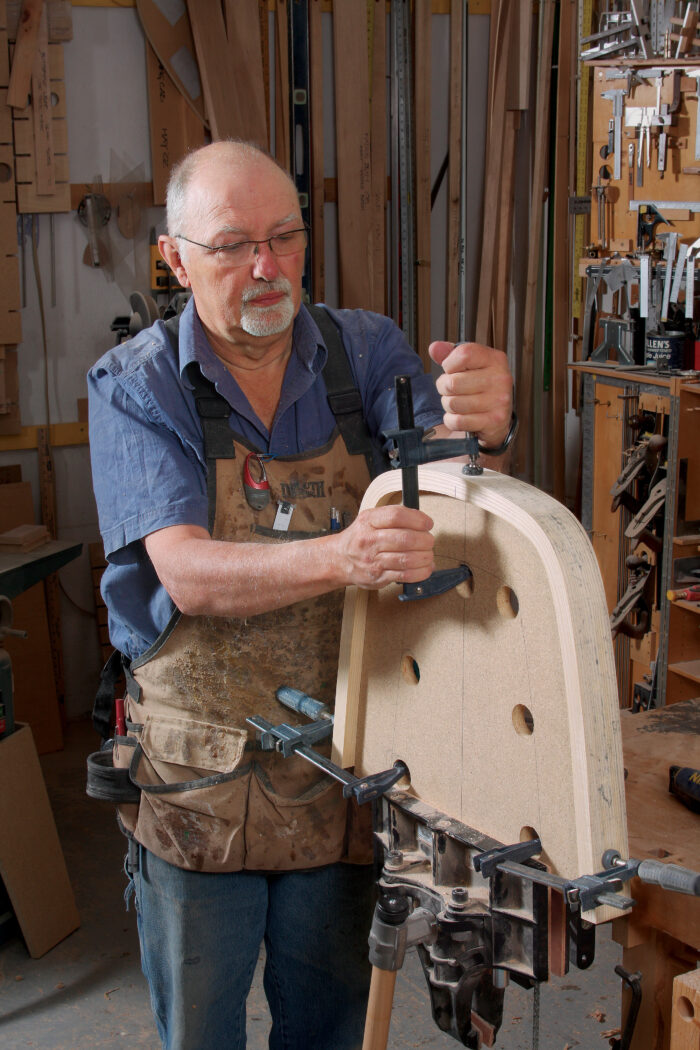
Whether you use the fan or not, make sure to remove the strap about one hour after bending the wood. If you leave the
strap on any longer, the chemical reaction between the tannins in the wood and the steel will stain the wood. Any staining that occurs before an hour should be superficial and easily removed with a card scraper.
If you are bending just one part, you can clamp it back to the form after removing the strap and let it dry there, but if you are bending several identical parts, make a drying rack and move the parts to it, so you can use the bending form again.
For the full article, download the PDF below:
Fine Woodworking Recommended Products

Ridgid EB4424 Oscillating Spindle/Belt Sander








Log in or create an account to post a comment.
Sign up Log in